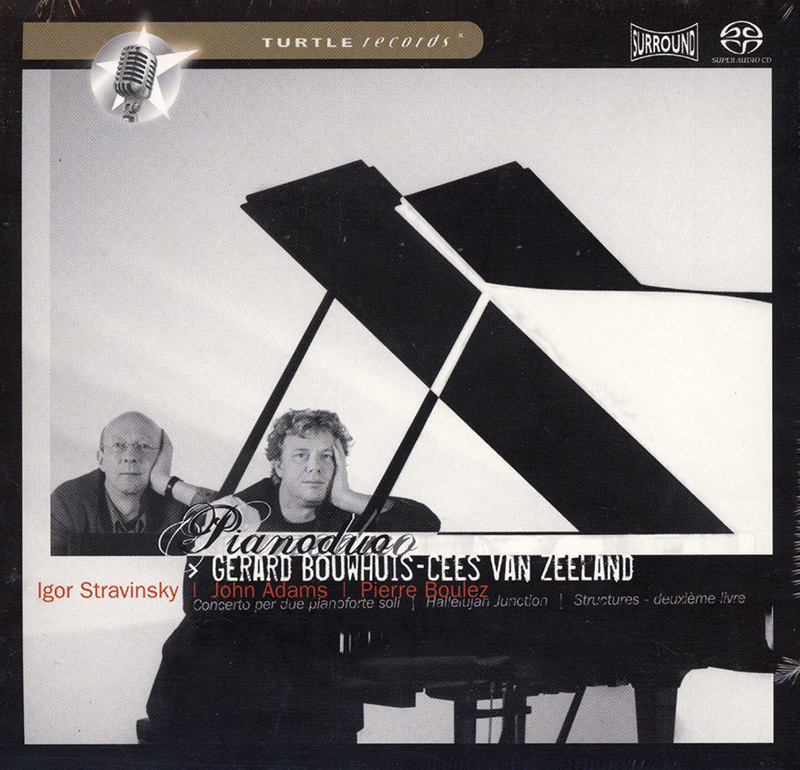Logowanie
KOLEKCJE!
BACH, CHOPIN, LISZT, MOZART, GRIEG, Dinu Lipatti, Otto Ackermann, Ernest Ansermet
The Master Pianist
PROKOFIEV, CHOPIN, TCHAIKOVSKY, SCHUMANN, BEETHOVEN, Martha Argerich, Claudio Abbado, Giuseppe Sinopoli
The Concerto Recordings
The Collection 2
Jakość LABORATORYJNA!
ORFF, Gundula Janowitz, Gerhard Stolze, Dietrich-Fischer Dieskau, Deutsche Oper Berlin, Eugen Jochum
Carmina Burana
ESOTERIC - NUMER JEDEN W ŚWIECIE AUDIOFILII I MELOMANÓW - SACD HYBR
Winylowy niezbędnik
ClearAudio
Essence MC
kumulacja zoptymalizowana: najlepsze z najważniejszych i najważniejsze z najlepszych cech przetworników Clearaudio
Direct-To-Disc
PIAZZOLLA, ChamberJam Europe
Tangos del Ángel y del Diablo
Direct-to-Disc ( D2D ) - Numbered Limited Edition
STRAVINSKY, ADAMS, BOULEZ, Gerard Bouwhuis, Cees van Zeeland
Concerto per due pianoforte soli / Hallelujah Junction / Structures - deuxième livre
- Igor Stravinsky
- Concerto per due pianoforte soli (1935)
- 01) I
- 02) II Notturno
- 03) III Quattro variazioni 1
- 04) III Quattro variazioni 2
- 05) III Quattro variazioni 3
- 06) III Quattro variazioni 4
- 07) IV Preludio
- 08) IV Fuga
- John Adams
- Hallelujah Junction (1998)
- (for two pianos)
- 09) section 1
- 10) section 2
- 11) section 3
- 12) section 4
- 13) section 5
- 14) section 6
- 15) section 7
- 16) section 8
- 17) section 9
- 18) section 10
- 19) section 11
- 20) section 12
- Pierre Boulez
- Structures - deuxième livre (1961)
- 21) Chapitre I
- 22) Chapitre II
- Gerard Bouwhuis - piano
- Cees van Zeeland - piano
- STRAVINSKY
- ADAMS
- BOULEZ
Bouwhuis & van Zeeland linernotes TRSA0021 Stravinsky, Adams & Boulez There are few CDs that in the space of one hour paint such a representative picture of the history of Western music down the course of one century. The CD released by Pianoduo does just that and what a century it reflects! More happened in the 20th century than in the four preceding ones together; not just to music, but in the fine arts and sciences as well. For over a thousand years, Western music was dominated by the Church modes and the tonality derived from it based on major and minor scales: in barely twenty-five years this trusted system was totally overthrown to pave way for the 'emancipation of dissonance' and atonality based on Schoenberg's twelve-tone system, serialism. However, in the years between 1918 and 1945, tonality reappeared in the different guise of neoclassicism, battling against the advance of atonality. But the conflict seemed resolved and atonality prevailed. When Schoenberg and Webern's atonality resulted in the strict serialism of the 1950s and 1960s, a time synonymous with the names Stockhausen and Boulez, atonal music had already reached its pinnacle. This was the dawning of the post-serial age of quotations and collage (Berio, Zimmerman, Kagel, Henze and Stockhausen) in which respect for the 'founding fathers' returned. The arrival of minimalism and neo-tonality and neo-romanticism set the tone for the final decades of the 20th century. The three piano works on the CD reflect the struggle between tonality and atonality, and its fall and subsequent regeneration, in three masterpieces from the aforementioned movements.

























